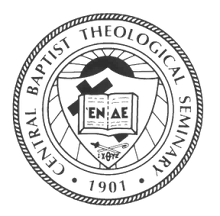The people of covenant had made it to the promised land. . . finally! For more than a generation, Israel had journeyed across stark landscape, sometimes looking forward to the land of promise, often lamenting what had been left behind in Egypt. Following the unseen God whom Moses found more trustworthy than they did, the temptation to “serve other gods” lurked eve near, most demonstrably in the saga of the golden calf. Now the new leader, Joshua, found it necessary to call the people to renew their covenant with the liberating God so that they might be clear about whom they worship and what the expectations of the Holy God were. So he gathered all the tribes at Shechem, a key city of Canaan, and charged them: “. . . choose this day whom you will serve. . .” (Joshua 24: 15b). The people said to Joshua: “The Lord our God we will serve. . .” (v. 24).
This pivotal story in the long biblical arc of God’s relationship with humanity reminds us that it is disastrous to divide our worship between the living God and “other gods”--anything else we allow to contest our highest loyalty. Concern for idolatry is not simply a relic of the past; it always looms as a threat for faithful people striving to offer themselves to God amidst the welter of competing claims.
Worship lies at the heart of covenant. The Hebrew Bible lays out a clear protocol for worship in terms of priestly function, levels of sacrifice, and spiritual practices meant to purify the people before God. The New Testament builds upon this foundation and develops understandings of baptism and eucharist, as well as the responsibility of all the people to present themselves as “living sacrifices” to God. Worship on the first day of the week, to celebrate resurrection, included prayers, singing, table fellowship, and alms for the poor. Worship prepared the people of God for work and witness in the larger community.
Central desires to prepare effective worship leaders, which is why we will be launching the Institute of Sacred Arts this coming fall. People long to worship with their whole selves, not simply with their ears as they attend to the spoken word, but with music and dance and visual arts. A longing for beauty is a longing for God, and we were created for both. Worship in our day is moving away from the Puritan dictates, with its structured focus on fides ex auditu (faith comes by hearing), and is becoming more holistic. Thoughtful, beautiful worship holds promise for honoring God and lessening the divided hearts of those who gather.
Yesterday, members of Central’s faculty met with representative faculty from the University of Missouri Kansas City Conservatory to fashion a collaborative educational initiative in sacred arts. We anticipate a wonderful new dimension of ministry preparation, and we seek to be over more clear about worship.
Molly T. Marshall
Continue visiting our website to follow the developments of the Institute of Sacred Arts.

No comments:
Post a Comment